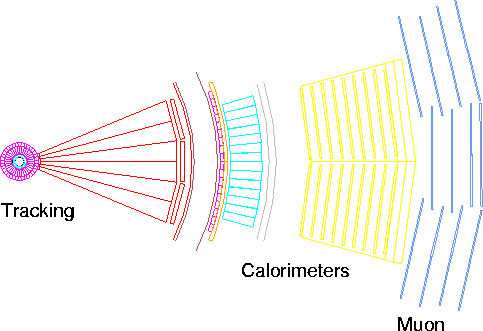A Multi-Layer Detector

The detector is made up of three main layers, each of which is further subdivided:
- The tracking detectors are low-density devices.
Particles produced in the electron-positron interaction just fly outwards
through the tracking detectors, usually losing only a tiny part of their energy.
However, if the particles are electrically charged, they cause ionisation of
the tracking detector materials as they fly outwards: we detect this ionisation, and
by measuring its position we can measure the path that the charged particle followed.
- The calorimeters are made of high density material,
and they are
designed to stop most of the particles originating from the electron-positron
interaction.
When electrons, photons or hadrons stop in the material of the calorimeters, they
give rise to showers.
We can measure the energy of the incoming particle from the properties of these
showers.
- On the outside of the detector lies the muon system.
The muon detectors are gas-filled chambers which detect the passage of charged
particles, similarly to the central tracking detectors.
Muons are very penetrating particles, and are the only ones which normally
pass right through the detector as far as the muon system: so we can tell
if a muon was present by looking for signals in these muon detectors.
The OPAL Webweavers 7 April 1998

